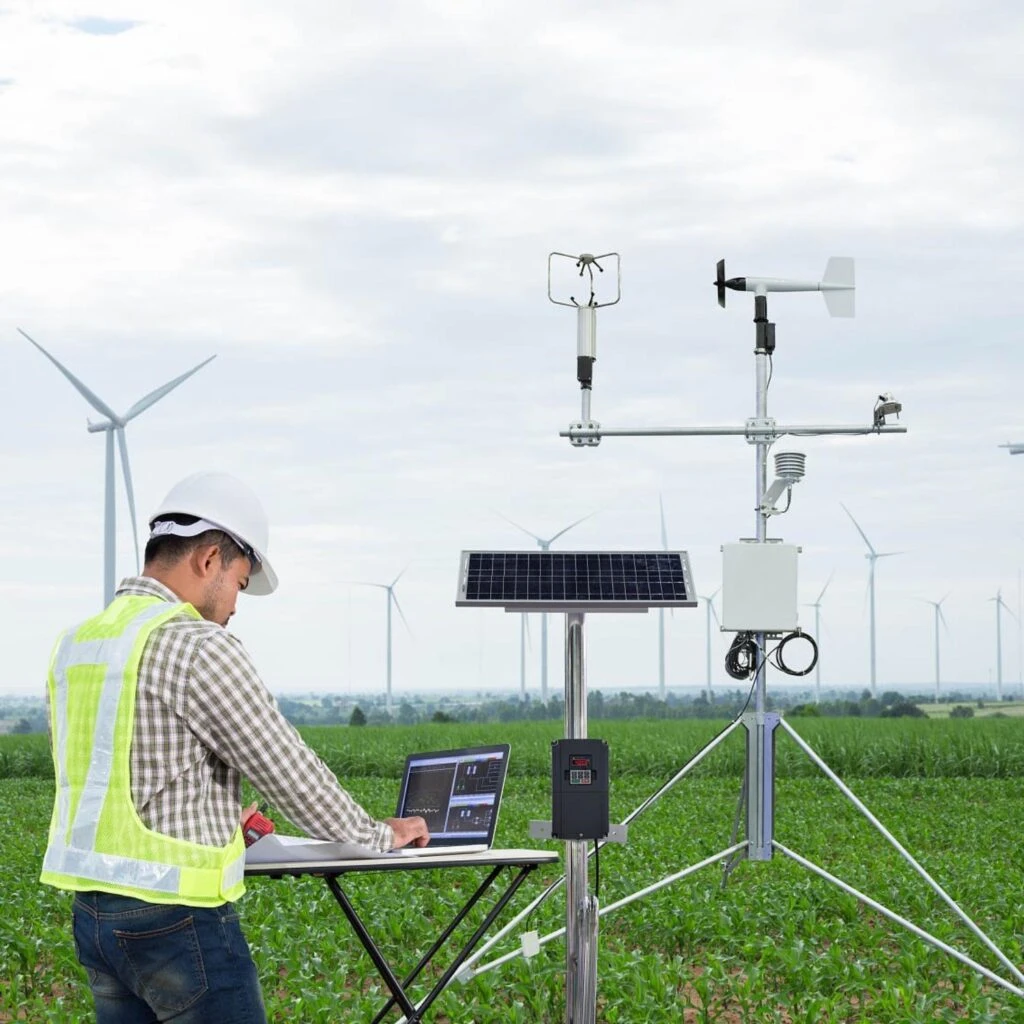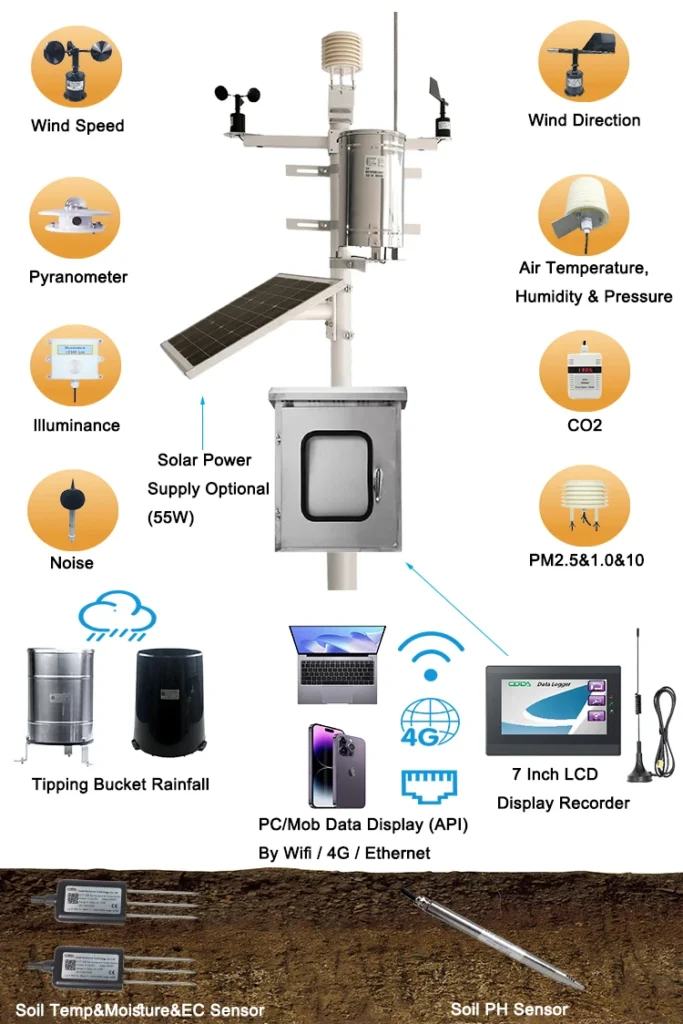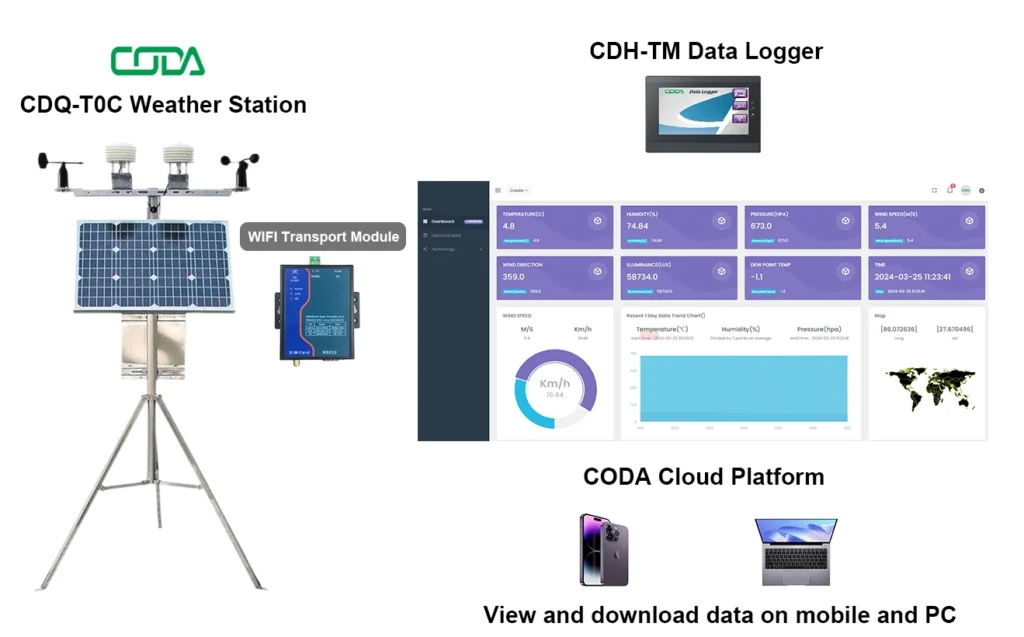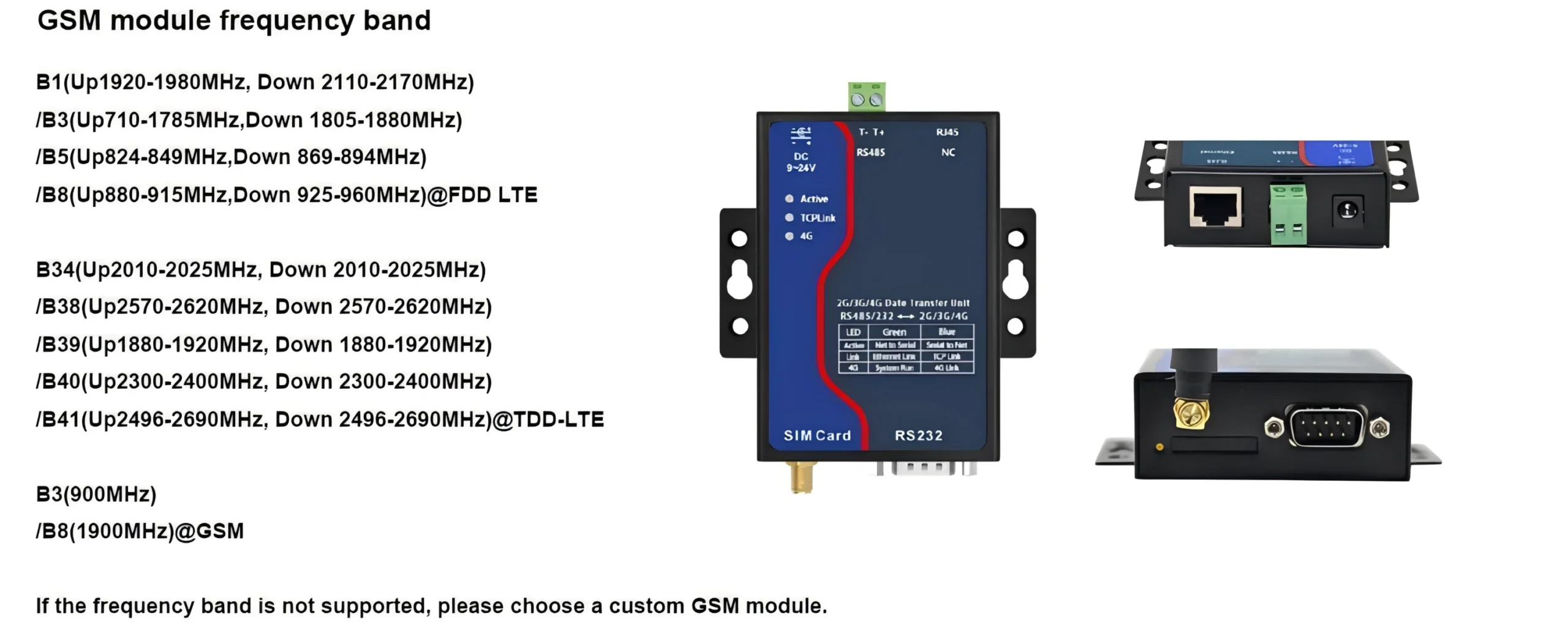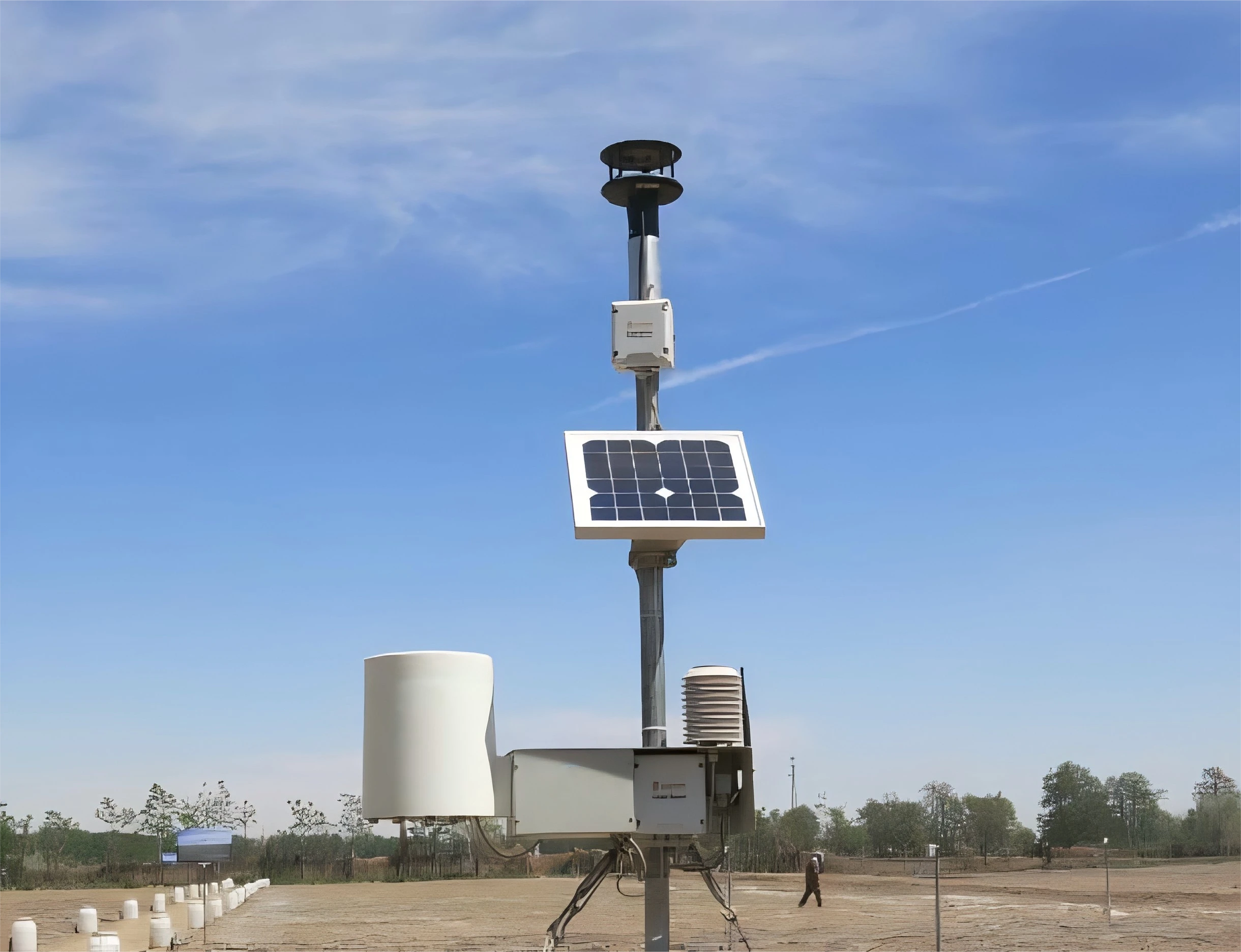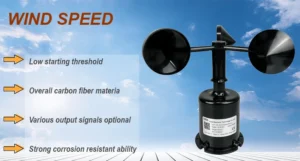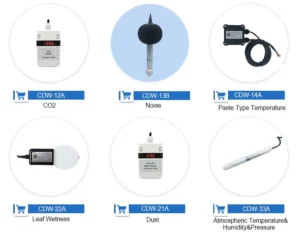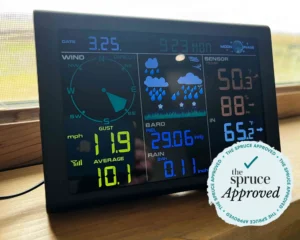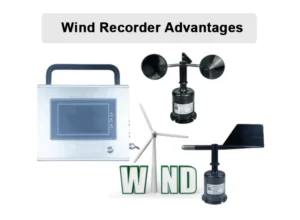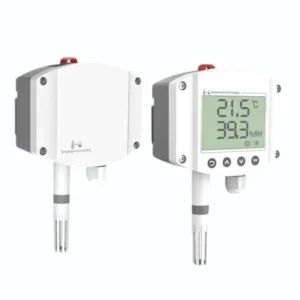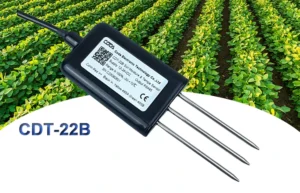how do weather stations communicate data?
Automatic Weather Station data transmission mode is mainly through the sensor to collect meteorological elements (such as temperature, humidity, pressure, etc.) data, the use of wired (such as optical fiber, cable) or wireless (such as satellite communication, cellular network, Zigbee, etc.) communication mode to transmit the data to the data processing center for storage, analysis and application.
Wireless Networks (Wi-Fi) Station transmission:
Semi-wireless Wi-Fi weather stations represent a structured strategy to weather tracking, using a marginal variety of cables to connect the exterior sensing units and tools. By reducing electrical wiring intricacies, these terminals use streamlined setup and upkeep processes.
High convenience
WIFI weather data transmission does not require complex cabling. automatic weather station data can be easily positioned at monitoring – required locations. Data transmission can be accomplished as long as they are within the WIFI signal coverage. For instance, in a small campus meteorological observatory, with a school – based WIFI network, transmitting meteorological data to a designated server or terminal device is straightforward.
The cost is relatively low
Compared to dedicated wireless networks, using existing WIFI for data transmission has lower equipment and usage costs. For small – budget weather projects like community or enthusiast monitoring stations, WIFI is a cost – effective option.
Faster transmission speed
WIFI technology offers high data – transmission rates. This enables rapid transfer of meteorological data, like real – time elements (wind direction, speed, precipitation, etc.) from weather stations to data receivers. For instance, during high – frequency meteorological data collection, large volumes of data can be sent quickly, ensuring data timeliness.
Strong flexibility
We can easily connect it to a variety of devices. The data acquisition equipment of the weather station can connect to terminal devices such as computers, smart phones and tablets through WIFI. In this way, we don’t limit the reception and processing of meteorological data to specific equipment types, and users can choose the appropriate equipment to receive and analyze data according to their needs and use scenarios.
Limited coverage
The transmission distance of the WIFI signal is generally short, which may reach the range of tens to hundreds of meters in the outdoor open environment, and the transmission distance will be shorter in the case of obstacles. This limits where weather stations can be deployed and need to be within effective coverage of WIFI access points. For example, in a large farm, if the WIFI access point is located in the central building of the farm, the weather station placed far away from the field may not receive effective WIFI signals.
Subject to environmental disturbance
WIFI signals are susceptible to interference from external environmental factors. For example, severe weather conditions (such as heavy rain, heavy snow, strong lightning, etc.) may weaken the signal strength or interrupt the transmission.At the same time, other electronic devices or radio signal sources around may also interfere with WIFI weather data transmission, affecting the stability and accuracy of data transmission.
GSM mobile network transmission:
Automatic Weather Station can utilize mobile website traffic to submit information by leveraging cellular modems or components embedded within the terminal’s hardware.
Wide coverage
4G network base stations widely distribute and can cover urban, rural and remote areas to a large extent. This allows a wide deployment of weather stations and doesn’t strictly limit them by geographical location.For example, for meteorological monitoring stations in mountains, forests or at sea, as long as there is 4G signal coverage, they can transmit the data to help the meteorological department obtain comprehensive meteorological data.
Faster transmission speed
The 4G network provides a high automatic weather station data transmission rate and can quickly send weather data to the server or receiving terminal. It can support the transmission of high frequency and large amount of data (such as high-precision meteorological element data, meteorological images, etc.) of weather stations.
Good stability
The mature 4G network technology, with its communication protocols and network architecture, ensures relatively stable data transmission. It can effectively withstand a certain degree of external interference. Even in complex electromagnetic environments or changing weather, it can maintain data transmission continuity. For example, in cities full of electronic devices and interference sources, 4G weather data transmission is less affected, with a lower chance of data loss or transmission interruption.
Strong device compatibility
Most 4G communication modules are small and easy to integrate into various meteorological monitoring equipment. And the 4G communication module can be compatible with a variety of meteorological sensors and data collectors, whether it is a traditional meteorological element sensor or a new type of intelligent sensor, as long as there is a corresponding data interface, data transmission can be carried out through the 4G module. This provides convenience for the upgrading and flexible configuration of weather station equipment.
High real-time
The fast transmission and stability of the 4G network enable near – real – time transmission of weather data to the data center. This is crucial for weather warning and real – time weather services. For example, when sudden meteorological disasters like rainstorms or tornadoes occur, the weather station can quickly send the collected data. This allows the meteorological department to issue early warning information promptly and offer timely meteorological services to the public.
The cost of use is relatively high
Compared with some other transmission methods (such as short-distance wireless transmission), 4G data transmission requires the use of network services provided by operators, which involves a certain amount of traffic costs and the cost of equipment communication modules.
Ethernet Weather Station transmission:
Automatic Weather Station data can upload information over Ethernet making use of wired connections to lan (LANs) or the web.
High speed stable transmission
Ethernet offers high – bandwidth and fast – speed data transmission. Ethernet can easily manage the simultaneous transfer of a large amount of meteorological data from weather stations, including satellite cloud image data and high – frequency data from various sensors (such as temperature, humidity, wind speed). Moreover, due to its strong transmission stability, through standard network protocols and physical connections, it guarantees data accuracy and consistency in long – distance transmission, reducing data loss and errors.
Long-distance transmission capability
Ethernet enables data transmission over long distances. Using optical fiber and other media, Ethernet can transmit data over tens of kilometers or more. This benefits large – scale meteorological monitoring networks, like cross – regional observation systems or wide – area data collection networks of meteorological departments. For example, Ethernet meets long – distance transmission needs between cities or between meteorological research institutions and field weather stations.
High security
Ethernet supports a variety of security protocols and encryption mechanisms. We often use important means such as Ethernet, like virtual private network (VPN) technology and data encryption, to transmit meteorological data which involves key areas like national security, economic activities and public safety. This is to ensure data security.
Good compatibility
The Ethernet standard widely uses a network standard and is compatible with many network devices and computer systems. Weather stations’ data acquisition equipment, servers, and end-user computers easily connect to Ethernet.This allows the transmission, storage and processing of meteorological data to easily utilize existing network infrastructure and software systems, reducing compatibility issues between devices and systems.
Strong scalability
The Ethernet architecture is easy to scale. When the weather monitoring network needs to add new weather stations, sensors or upgrade the data transmission rate, it can meet the expansion needs by simply adding network equipment (such as switches, routers, etc.) or upgrading the network bandwidth.
High wiring requirements
Physical cabling is required for Ethernet transmission, especially when wired Ethernet is utilized. This places certain limitations on the deployment location of the weather station, and the feasibility and cost of wiring must be taken into account. In a building or field environment, it may be necessary to lay underground pipelines and install overhead cables, which heightens the complexity and cost of installation.
Susceptible to physical damage
Ethernet lines are vulnerable to physical damage because they rely on physical cables for transmission. These conditions will lead to the interruption of meteorological data transmission, requiring timely maintenance to restore data transmission.
